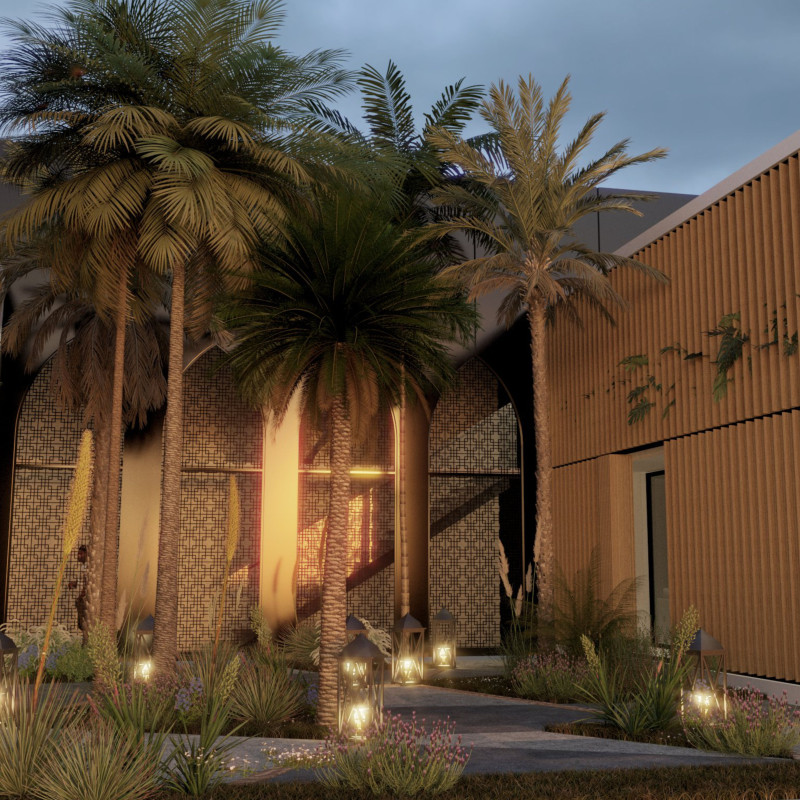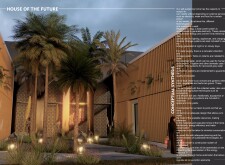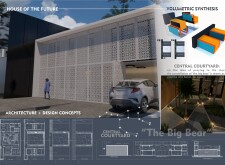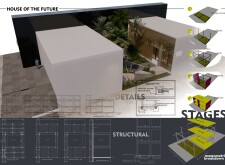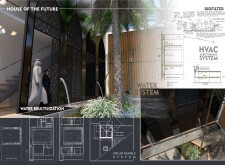5 key facts about this project
### Overview
Located in an unspecified arid climate, the House of the Future presents a forward-thinking approach to sustainable living through the integration of advanced technologies and environmentally considerate design principles. The intent is to create a self-sufficient residence that minimizes reliance on conventional utilities, employing innovative strategies for energy, water, and food supply within its architectural framework.
### Self-Sufficiency and Spatial Layout
At the core of the design is a commitment to self-sustainability, achieved through the implementation of renewable energy systems, including solar panels and rainwater harvesting. The architectural configuration features a central courtyard, which serves both as an ecological focal point and a communal space, fostering a connection to the natural environment. This area is designed to promote well-being and provide a serene retreat, while the surrounding volumetric arrangement of staggered planes enhances the visual interaction with both the interior and exterior landscapes.
### Materiality and Ecological Integration
The material selection underscores the project's sustainability objectives, utilizing reinforced concrete for structural integrity alongside green building materials that support local biodiversity. The façade explores the contrast between opaque and transparent surfaces, allowing ample natural light and air circulation to permeate the living spaces. Additionally, the landscaping incorporates orchards and gardens designed to produce food through sustainable practices such as aquaponics and hydroponics, contributing to the ecological balance and supporting local wildlife.
The incorporation of biofiltration systems for water purification and aerothermic HVAC systems for climate control further accentuates the project's ecological sensibility. Automation technology is seamlessly integrated to enable residents to monitor and manage their energy and water use effectively, reflecting a comprehensive approach to modern, sustainable living.


